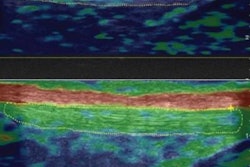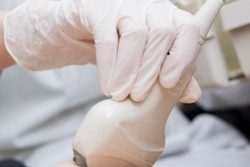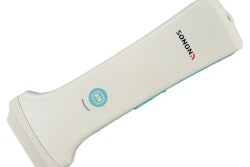In a presentation to be delivered on Wednesday morning, Dr. Su Hyun Lee, PhD, will share results from a study conducted between January 2012 and December 2014 to evaluate whether bilateral axillary scanning should be routinely included in supplemental screening ultrasound.
The research included 20,327 supplemental screening ultrasounds in women with negative mammograms. Experienced radiologists performed bilateral whole-breast ultrasound (WBUS) examinations with a handheld device; bilateral axillary regions also were scanned. Lee's group then calculated cancer detection rates and positive predictive values of supplemental screening ultrasound for the breasts only and for the breasts and axillae.
Bilateral whole-breast ultrasound showed positive results in 1,715 exams, with a cancer detection rate of 1.3 cases per 1,000 exams. Its positive predictive value after biopsy was 7.8%. Bilateral axillary ultrasound showed positive results in 46 exams -- 34 of which were false positives, as confirmed by WBUS -- and no difference in the cancer detection rate, according to the researchers.
Routine bilateral axillary scanning had no effect on the cancer detection rates of supplemental screening ultrasound, but it increased the number of false-positive findings, which suggests that it is unnecessary, the researchers concluded.



















